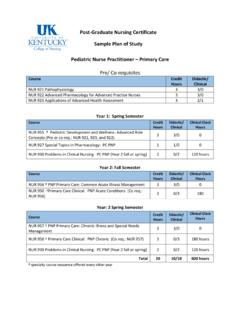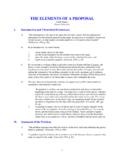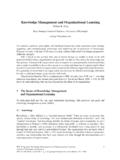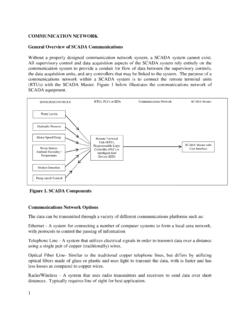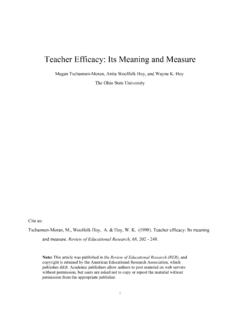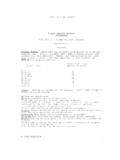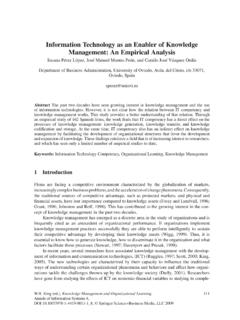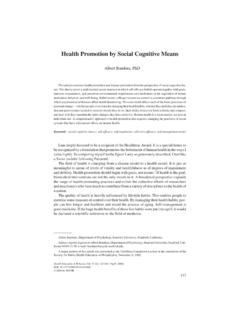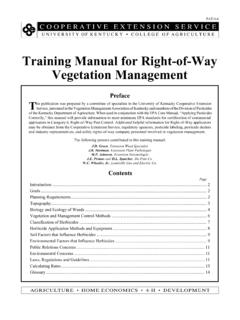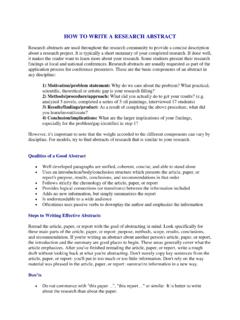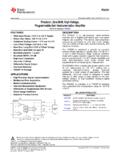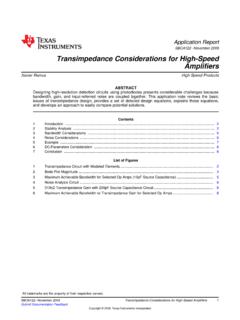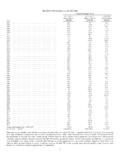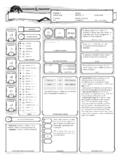Transcription of Analysis of self-efficacy theory of behavioral change
1 Cognitive Therapy and Research, VoL 1, No. 4, 1977, pp. 287-310 Analysis of self - efficacy theory of behavioral change ' Albert Bandura 2 and Nancy E. Adams Stanford University This article reports the findings of two experimental tests of self - efficacy theory of behavioral change . The first study investigated the hypothesis that systematic desensitization effects changes in avoidance behavior by creating and strengthening expectations of personal efficacy . Thorough extinction of anxiety arousal to visualized threats by desensitization treatment pro- duced differential increases in self - efficacy . In accord with prediction, microanalysis of congruence between self - efficacy and performance showed self - efficacy to be a highly accurate predictor of degree of behavioral change following complete desensitization.
2 The findings also lend support to the view that pereeived self - efficacy mediates anxiety arousal. The second experiment investigated the process of efficacy and behavioral change during the course of treatment by participant modeling. self - efficacy proved to be a superior predictor of amount of behavioral improvement phobics gained from partial mastery of threats at different phases of treat- ment. According to social learning theory (Bandura, 1977a), changes in defensive behavior produced by different methods of treatment derive from a com- mon cognitive mechanism. It is postulated that psychological procedures, whatever their format, serve as ways of creating and strengthening expecta- tions of personal effectiveness.
3 Perceived self - efficacy affects people's 'This research was supported by Public Health Research Grant M-5162 from the National Institute of Mental Health. The authors are indebted to Laura Macht for her able assistance in administering the assessment procedures, and to Earl Neilson for his contributions to the pre- liminary work in this project. We are grateful to Patti McReynolds, Robert Peterson, and Duane Varble for arranging the research facilities at the University of Nevada, Rend. 2 Address all correspondence to Albert Bandura, Department of Psychology, Stanford Univer- sity, Stanford, California 94305. 287 This journal is copyrighted by Plenum. Each article is available for $ from Plenum Pub- lishing Corporation, 227 West 17th Street, New York, 10011.
4 288 Bandura and Adams choice of activities and behavioral settings, how much effort they expend, and how long they will persist in the face of obstacles and aversive experi- ences. The stronger the perceived self - efficacy , the more active the coping efforts. Those who persist in subjectively threatening activities will eventually eliminate their inhibitions through corrective experience, where- as those who avoid what they fear, or who cease their coping efforts prema- turely, will retain their self -debilitating expectations and defensive behavior. In this social learning Analysis , expectations of personal efficacy stem from four main sources of information. Performance accomplishments provide the most influential efficacy information because it is based on per- sonal mastery experiences.
5 The other sources of efficacy information include the vicarious experiences of observing others succeed through their efforts, verbal persuasion that one possesses the capabilities to cope success- fully, and states of physiological arousal from which people judge their level of anxiety and vulnerability to stress. Empirical tests of this theory (Bandura, Adams, & Beyer, 1977), con- firm that different treatment approaches alter expectations of personal effi- cacy, and the more dependable the source of efficacy information, the greater are the changes in self - efficacy . Thus, treatments based on per- formance accomplishments through the aid of participant modeling produce higher, stronger, and more generalized expectations of personal efficacy than do vicarious experiences alone.
6 Results of a microanalysis of the congruence between self - efficacy and performance reveal that behav- ioral changes correspond closely to level of self - efficacy whether instated enactively or vicariously. As a further test of the generality of this theory , an experiment was conducted of efficacy expectations instated by systematic desensitization, which is aimed at eliminating emotional arousal. Social learning theory and the dual-process theory of anxiety, on which the desensitization approach is based, posit different explanatory mechanisms for the changes produced by this mode of treatment. The standard desensitization approach is based on the assumption that anxiety activates defensive behavior (Wolpe, 1974).
7 According to this view, association of neutral events with aversive stimulation creates an anxiety drive that motivates defensive behavior. The defensive behavior, in turn, is reinforced by reducing the anxiety aroused by conditioned aversive stimuli. Hence, to eliminate defensive responding it is considered necessary to eradicate its underlying anxiety. Treatment strategies are therefore keyed to reduction of emotional arousal. Aversive stimuli are presented at grad- uated levels in conjunction with relaxation until anxiety reactions to the threats are eliminated. self - efficacy theory 289 Although desensitization produces behavioral changes, the principal assumption that defensive behavior is controlled by anxiety arousal is dis- puted by several lines of evidence (Bandura, 1977b; Bolles, 1972; Herrn- stein, 1969; Rescorla & Solomon, 1967).
8 Autonomic arousal, which consti- tutes the principal index of anxiety, is not necessary for defensive learning. Maintenance of avoidance behavior is even less dependent upon autonomic feedback. Social learning theory regards anxiety and defensive behavior as coeffects rather than as causally linked (Bandura, 1977b). Aversive experi- ences, of either a personal or a vicarious sort, create expectations of injuri- ous consequences that can activate both fear and defensive behavior. Being coeffects, there is no fixed relationship between autonomic arousal and actions. Dual-process theory predicts that thorough extinction of anxiety should eliminate avoidance behavior. In the desensitization treatment, how- ever, anxiety reactions are typically eliminated to visualized representa- tions of feared situations.
9 One would expect some transfer loss of extinction effects from symbolic to real-life threats, as is indeed the case (Agras, 1967; Barlow, Leitenberg, Agras, & Wincze, 1969). It is not uncommon for people to perform less than they have been desensitized to in imagery. Therefore, extinction of anxiety to visualized threats might be expected to produce substantial, though less than complete, reductions in avoidance be- havior. However, since anxiety arousal to visualized threats is completely eliminated in all subjects, dual-process theory provides no basis for predict- ing the substantial variability in behavior commonly displayed by subjects who have all been equally desensitized. Stressful situations generally elicit emotional arousal that, depending on the circumstances, might have informative value concerning personal competency.
10 Therefore, emotional arousal is a constituent source of infor- mation that can affect perceived self - efficacy in coping with stressful situa- tions (Bandura, 1977a). Because high levels of arousal usually debilitate performance, individuals are more likely to expect to function effectively when they are not beset by aversive arousal than if they are tense and viscer- ally agitated. Treatment approaches that focus on physiological arousal as the major factor requiring modification further reinforce the expectation that anxiety arousal governs behavioral functioning. Clients are taught how to manage their physiological arousal, they learn to discriminate small vari- ations in their level of arousal, and most of the treatment strategies are de- signed to eradicate physiological arousal to subjective threats.
